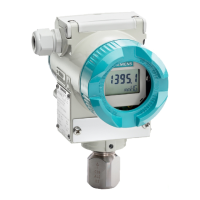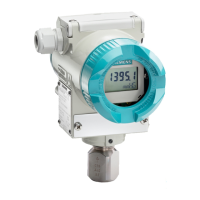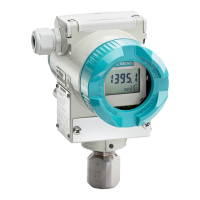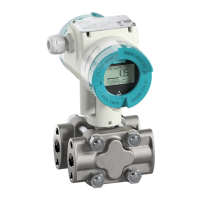UMSITRAPDS3-1 Model Designations and Specifications
November 2005
9-35
9.5 NETWORK TOPOLOGY
Point-to-Point
Transmitter Quantity...............................1
Network Signal and Connection.............Analog 4-20 mA, single current loop, see Figures 4-6, 4-
7, and 4-8
Network Resistance ................................See Section 4.3.5
Multi-Drop
Transmitter Quantity...............................1-15
Network Signal and Connection.............Digital, parallel connected, see Figure 4-9
Network Resistance ................................See Section 4.3.5
9.5.1 Two-Wire Cable
Type .....................................................................Twisted single-pair, shielded, copper
Conductor Size for Network Length
Less than 5000 feet (1524 m)........................24 AWG (0.23 mm
2
) minimum
More than 5000 feet (1524 m).......................20 AWG (0.56 mm
2
) minimum, 16 AWG (1.3 mm
2
)
maximum
Cable Capacitance................................................Refer to Section 4.3.6
Recommendation .................................................Belden 8641, 24 AWG (0.23 mm
2
)
Belden 8762, 20 AWG (0.56 mm
2
)
Length, Maximum................................................Refer to Section 4.3.6
9.6 HAZARDOUS AREA CLASSIFICATIONS
Tables 9-8 and 9-9 list the hazardous area classifications available at the time this manual was printed.
Contact your local Siemens representative or the factory for the latest classifications.
CE Approval - A Declaration of Conformity can be found on a later page in this section.
Intrinsically Safe Operation in a Hazardous Area
Operation is permitted only with circuits that are certified as intrinsically safe. The transmitter complies
with Category 1/2 and it may be installed in zone 0.
The EU type examination certificate applies to installation on the walls of containers and pipes that may
contain explosive gas/air or vapor/air mixtures only under atmospheric conditions (pressure: 12 psi to 16
psi, temperature: -20°C to +60°C (-4°F to +140°F)). The permissible ambient temperature range is -40°C
to +85°C (-40°F to +185°F), in explosion hazard areas (for T4) -40°C to +85°C (-40°F to +185°F).
The user may also apply the device in non-atmospheric conditions outside the limits set in the EC-Type
Examination Certificate, according to the conditions for use (explosive mixture) and if the required
additional security measures have been met. The limit values stated earlier in this section must be
observed in any case.

